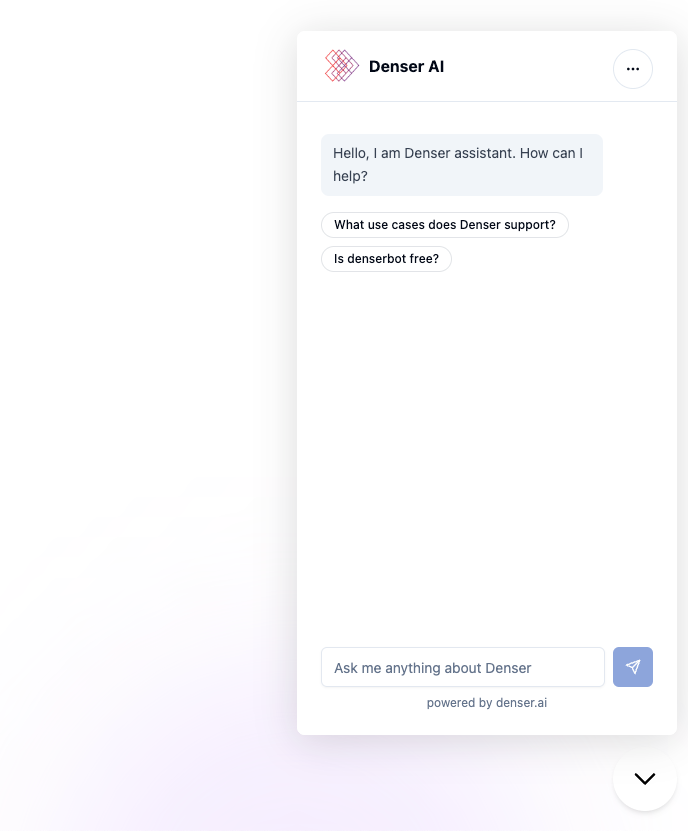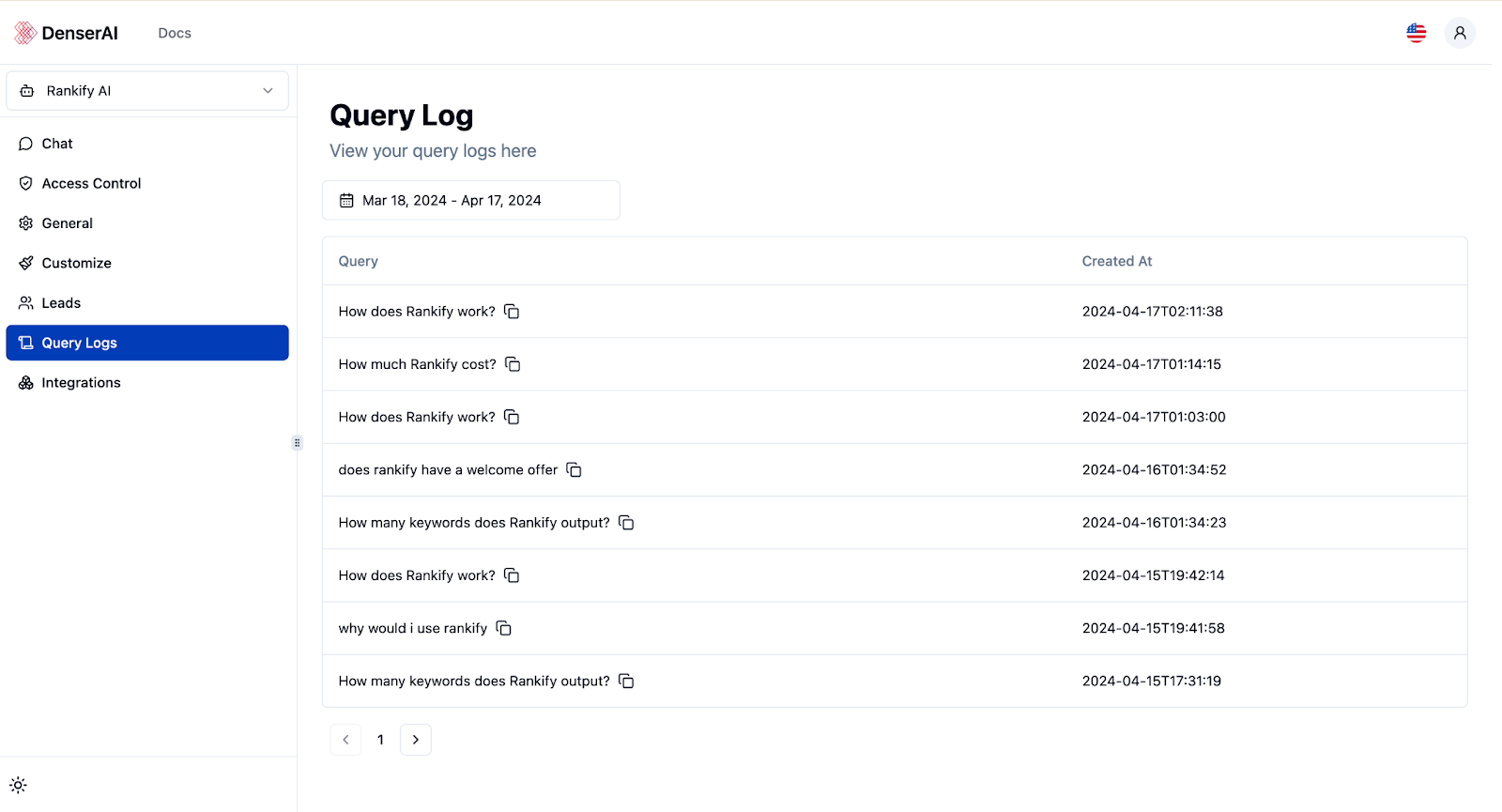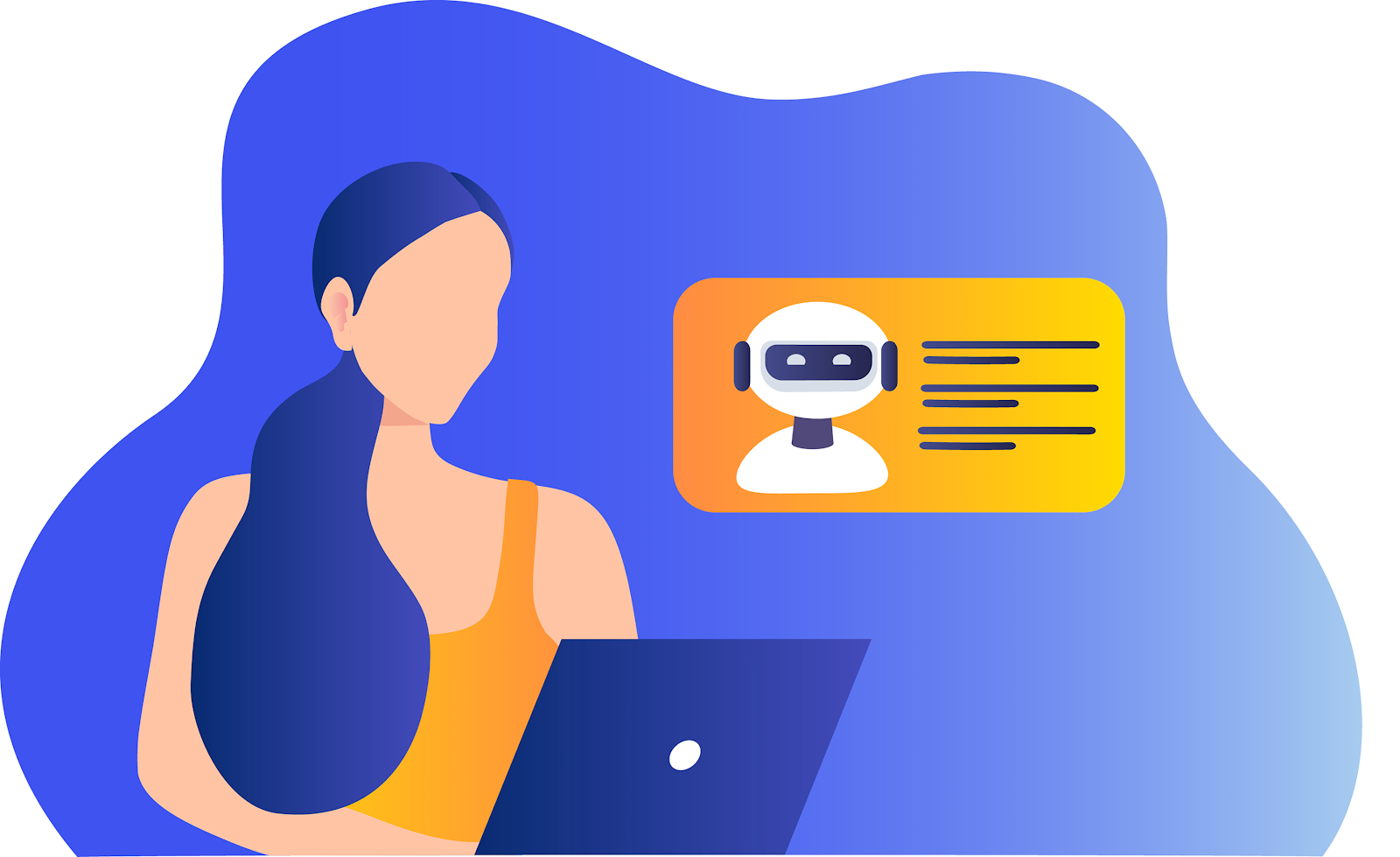Handling a surge in customer questions about products, IT support, and policies can overwhelm even the most organized teams. This may lead to delayed responses and potential lost sales.
Lately, conversational marketing has gotten more popular, catching the interest of tech and business communities alike. Over the past few years, more and more businesses have been using conversational bots, as customers expect fast and personalized responses.
In this article, we will walk you through setting up a chatbot on your website. Whether you want to improve customer service, get more people interacting with your site, or just smooth out day-to-day tasks, we'll help you get started.
Why Do Businesses Need Website Chatbots?
Chatbots provide quick and personalized user messages, which users appreciate when browsing online. They help keep customers satisfied, free up staff to tackle more complex issues and offer instant answers around the clock.

They can also handle several conversations simultaneously, which makes them great for improving efficiency. An AI chatbot can make your business run smoothly while keeping your customers engaged.
Now that we understand chatbots' importance for businesses, let's start our chatbot tutorial and learn how to build one for your website.
How to Create a Chatbot for Your Website
This guide will take you through each step, from setting up your AI chatbot builder to ensuring it works well. Here's how to get started:
Step 1: Establish Chatbot Success Metrics
When creating a chatbot, it is crucial to start with a clear understanding of what you want it to achieve. This means establishing specific success metrics or Key Performance Indicators (KPIs). This will help you measure how well your AI chatbot performs against your goals.
Think about the primary purpose of your chatbot. Is it there to improve customer satisfaction, reduce response times, increase sales, or maybe reduce the workload on your human customer service team? Depending on its role, the metrics you'll track might vary:
- Customer Satisfaction : Measure with user ratings and surveys post-interaction.
- Response Time: Track the speed of chatbot replies.
- Conversion Rate: Assess effectiveness in sales or lead generation.
- Interaction Rate: Evaluate user engagement depth and duration.
Step 2: Analyze User Interactions
When planning to introduce an intelligent chatbot, it's important to understand what your users need. Start by closely examining the kinds of questions and issues that come up frequently in your current customer service interactions, like emails or live chats. This helps you pinpoint what your chatbot should be prepared to handle.
It's also helpful to ask users directly about their experiences and expectations. Simple surveys or informal conversations can reveal what users are trying to achieve on your site, their frustrations, and their thoughts on using a chatbot.
Lastly, analyzing how people interact with your site can pinpoint where they need help. Use tools to track user behavior and identify key areas where a chatbot could be most beneficial. This approach ensures your AI chatbot is functional and genuinely useful to your users.

Step 3: Give Your AI Chatbot a Personality
Choosing a personality for your own chatbot should reflect your brand and audience. To give your chatbot a unique personality, consider incorporating these traits:
- Creative name for your chatbot.
- Welcome images such as a friendly avatar.
- Use of casual speech and slang language.
- Brand emojis.
- Fun Images/GIFs.
If your brand is laid-back and friendly, then your own chatbot should have a casual, approachable style. A professional and polite chatbot might fit better if you're in a more formal industry. The right personality can make interactions more natural and encourage users to return.
Step 4: Map Out Conversation Scenarios
Start by identifying the common questions or issues that users might bring up. Then, sketch out how the chatbot should respond to steer users toward the answers they need or the actions they seek.
Plan for different ways the chatbot conversation could go, depending on how users might respond. The goal is to design your chatbot to lead conversations naturally and ensure users feel well-assisted throughout their interaction.
Step 5: Build Your Own Chatbot
Now comes the exciting part—building your chatbot. This step involves implementing all the plans and designs to create a functioning tool interacting with users.
Depending on your comfort with technology and the specific needs of your chatbot, you can either use chatbot development platforms that simplify the process or use custom coding for more flexibility.

If you choose chatbot platforms, you'll find many user-friendly options, such as Denser.ai. You can integrate it into your website as a simple chat widget, embed it using an iframe, or even handle user queries through the Denser REST API. This sophisticated chatbot builder is a huge help for businesses, especially if they're unfamiliar with coding.
For those businesses that need a chatbot with more specialized capabilities or prefer having complete control, custom coding is the way to go. Although it requires more time and possibly a deeper tech stack, it allows you to tailor every aspect of the chatbot experience.
Step 6: Conduct Thorough Testing
Once your first chatbot is built, it's time to make sure it works like it should. Testing is crucial as it helps you catch any issues before the chatbot goes live.
Start by trying out all the different conversations you've planned to see if the custom chatbot responds correctly. It's a good idea to involve a few people who weren't part of the chatbot creation process, as they might see things from a new perspective and catch problems you missed.
As you test, pay attention to how the chatbot handles unexpected questions or mistakes in user input. Make adjustments as needed to ensure that it can gracefully guide users back on track.
Step 7: Strategically Deploy Your Chatbot
Now that your chatbot is ready and tested, the next step is to introduce it thoughtfully on your website. Consider where your chatbot can make the biggest impact.
For example, if it's built to assist with customer queries, placing it on your contact or help pages would be wise. If it aims to boost sales, consider adding it to product pages or near the checkout area.
Thoughtful placement means your chatbot will be more than just a new feature—it will be a practical, useful tool for your visitors.

Step 8: Track Chatbot's Performance
After launching your chatbot, monitor its performance. You initially set specific goals and performance metrics, so now it's time to measure up.
Use tools and analytics to monitor how the chatbot interacts with users. Look at its response accuracy, user satisfaction, and whether it's meeting your business objectives, such as reducing response times or increasing sales.
Regularly checking these metrics will give you insights into what's working and might need tweaking. Perhaps the chatbot needs more data to handle certain questions better, or maybe it's not as effective in some areas of your website as others.
Tips on Optimizing Website Chatbots
When making the most out of your website's chatbot, a few pro tips can enhance its effectiveness and user experience. Here are some key strategies to consider:
Keep It Simple
Avoid using complicated language or overloading conversations with too many options. Instead, aim for clarity in each interaction. A simple and direct chatbot can prevent users from feeling overwhelmed and ensure they can quickly find the answers they need.
Identify Common Questions
Look through your customer support records, such as emails, phone calls, and live chats, to see what issues come up often. Once you know these, you can program your chatbot to answer these questions immediately. This ensures that your chatbot is immediately helpful to users by quickly providing the information they need most.
Regular Updates and Maintenance
Regular updates allow you to refine the chatbot interaction based on user feedback and changing needs. For example, if you introduce new products or services, update your chatbot to include information about them. Also, continually analyze chatbot interactions to identify areas where it might be falling short or where there are opportunities for improvement.
Clear and Concise Rules
When presenting users with options, limit them to prevent decision fatigue, which can make interaction less efficient. Ensure the conversation flow is logical from one point to the next, which helps users follow along easily and reach their desired outcome without frustration.
Integrate with Other Tools
Link the chatbot platform to your CRM system to allow it to access detailed customer information. If your site includes online sales, integrate your chatbot with your e-commerce platform to assist users with transactions, provide product recommendations, and support the checkout process.
Offer an Escalation Option
Define specific conditions under which a conversation should be escalated. This could be based on the complexity of the query, customer frustration levels (detected through sentiment analysis), or the user explicitly requesting to speak to a human.
The chatbot understands and responds to user questions using natural language processing (NLP). Ensure that the transition from the chatbot to a human agent is seamless. Users should feel they are being cared for, not shuffled around. Provide the human agent with the chat history to avoid making the customer repeat information.
Effortlessly Build a Website Chatbot with Denser.ai
Are you looking to build a chatbot to improve your customer interactions? Denser.ai offers AI-powered search, delivering instant and accurate answers on your site or app.

Keep slow and unreliable search results from holding your customer service back. Upgrade to Denser.ai for a seamless, efficient support experience that keeps your customers satisfied and engaged. Request a product demo, or sign up for a free trial today!
FAQs About Creating Chatbots for Websites
Can I customize the chatbot experience on other messaging platforms?
Chatbots can work across multiple channels like WhatsApp, Facebook Messenger, and Telegram. You can spice things up to keep users interested by adding quick response buttons, clickable options, and image carousels.
What should I do if my chatbot isn't performing well?
If your chatbot isn't performing as expected, consider revisiting its design and functionality. Analyze user interactions to identify where users face issues, adjust the conversation flows, enhance understanding capabilities, or improve response accuracy.
Can chatbots on websites be integrated with voice recognition software?
Absolutely. Chatbots let users talk just like they would with a person using voice commands. This enhances the experience for mobile users who might prefer speaking over typing.
